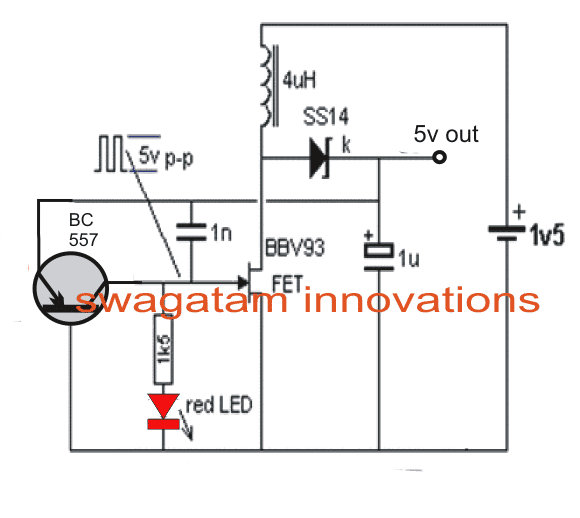In this post I have explained a very simple charging a cell phone from a 1.5v battery utilizing merely a 1.5V as the input source. The source can be any 1.5V cell rated at minimum 1000 mAH.
Circuit Operation
The circuit description is provided below, let's try to understand the working principle of the proposed cell phone charger circuit using a 1.5V source.
The circuit of a phone charger bears a simple design, with two surface-mount transistors, an inductor, diode, resistor and LED.
However, it should be noted that, one transistor acts as a controller while the other as FET. As the controller gets power from the output (5v) of the circuit, and detecting no-load; the same shuts down.
Moreover it requires very less current. Connecting the 1v5 battery, the controller initiates using less than 1v5 because of the Schottkey diode, charging the 1uF capacitor with the use of FET and flyback effect of the inductor; thus producing high voltage.
With the voltage of output set to 5v, the controller goes in ‘Off’ state, and the only load managed by the 1uF is the controller. As the voltage falls across the capacitor, the controller turns on in bursts, thereby charging the 1uF to 5v.
The method of charging a cell phone from a 1.5v battery is very cheap and can be made at as low as $3, and it also comes with 4 adapter leads.
Submitted By: Dhrubajyoti Biswas
Circuit Diagram
